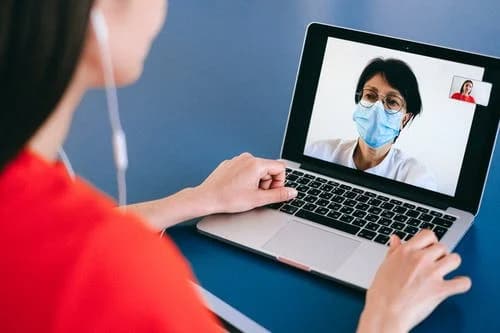
Many people have already heard of telemedicine, which allows people to chat with a healthcare professional remotely, but not many have heard of tele-audiology.
Tele-audiology allows people with hearing loss to receive care remotely. A patient can now use a phone or computer to connect with their hearing care professional, making various services available to the patient from the comfort of their home.
How it Works
All modern hearing aid brands come with an accompanying smartphone app. A hearing care provider can remotely program a person’s hearing aids using a smartphone app, permitting programming to occur without having the patient come into an office.
This is very useful if a person needs their hearing aid settings adjusted or changed. The hearing professional can make these adjustments in real-time to adjust or change as their patient listens in.
Synchronous and Asynchornous-What’s the Difference?
There are two main ways to perform tele-audiology– synchronous or asynchronous. Synchronous or live face-to-face, is the most common form of tele-audiology. This is typically what people think of when they imagine telemedicine. It requires a video connection between the audiologist and the patient. A technician or audiology assistant is needed for the patient site acting as a physical presence for the audiologist.
Synchronous tele-audiolody is like a live appointment because the audiologist is present and running the meeting. The equipment used for synchronous tele-audiology must be PC-based and paired with a two-way video stream. The audiologist controls the equipment from their office while the patient and the technician are in a different location. Audiometry, hearing aid fittings, and counseling can be done.
The second way to perform tele-audiology is asynchronous, or Store-and-Forward. For this method, the audiologist does not need to be present for the appointment because the patient uses the program to obtain basic air/bone/speech information. The setup is with a GSI audiometer and a computer with GSI AMTAS (Automated Method for Testing Auditory Sensitivity) tele-audiology software loaded on it.
The patient performs the automated test, and the results are “stored and forwarded” to the audiologist for interpretation. The benefit of this model is it increases access. You don’t have to wait for a scheduled appointment for diagnostic audiometry.
The Applications of Tele-audiology
The applications of tele-audiology are endless, particularly for older adults with hearing loss who are homebound or in a nursing home. On average, a new hearing aid user needs to see an audiologist about three times. For patients with dementia, this adjustment may take significantly more time—but the caregivers of these patients may not have the time to bring patients in for multiple fine-tuning visits.
This technology also provides the ability to better service patients located at a great geographical distance from the closest clinic/health care facility. It also dramatically helps improve those that are unable to travel due to mobility issues, childcare issues, or an inability to involve the entire family.
Tele-audiology also allows caregivers or family members to listen in with the patient, which may help them remember things the patient might otherwise forget or not hear.
The utilization of tele-audiology provides improved equity of access to care, reduced travel time/cost for the patient, and improved flexibility around the delivery of care. There are also more significant choices in the format of the services/applications available to the patient, more effective and efficient communication between the patient and the professional, and a marked improvement of troubleshooting in a comfortable environment.
Examples of services making use of tele-audiology are hearing aid programming, aural habilitation/rehabilitation, counseling, infant hearing screening, diagnostic hearing assessments, pure-tone audiometry, outcome measurement, and internet-based treatment for tinnitus.
Most states allow licensed audiologists to implement tele-audiology. A few states also allow hearing instrument specialists (HIS) to do so.


